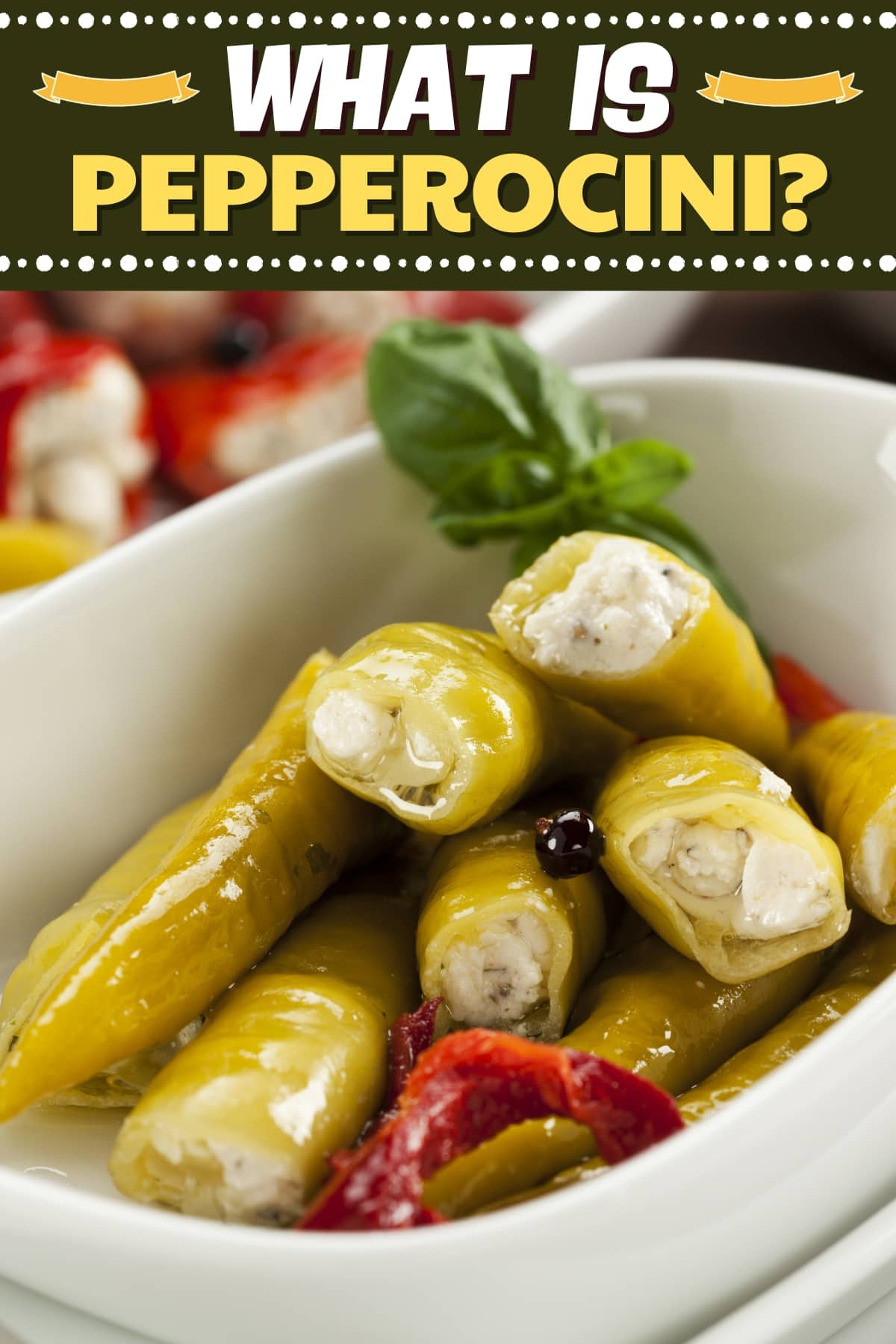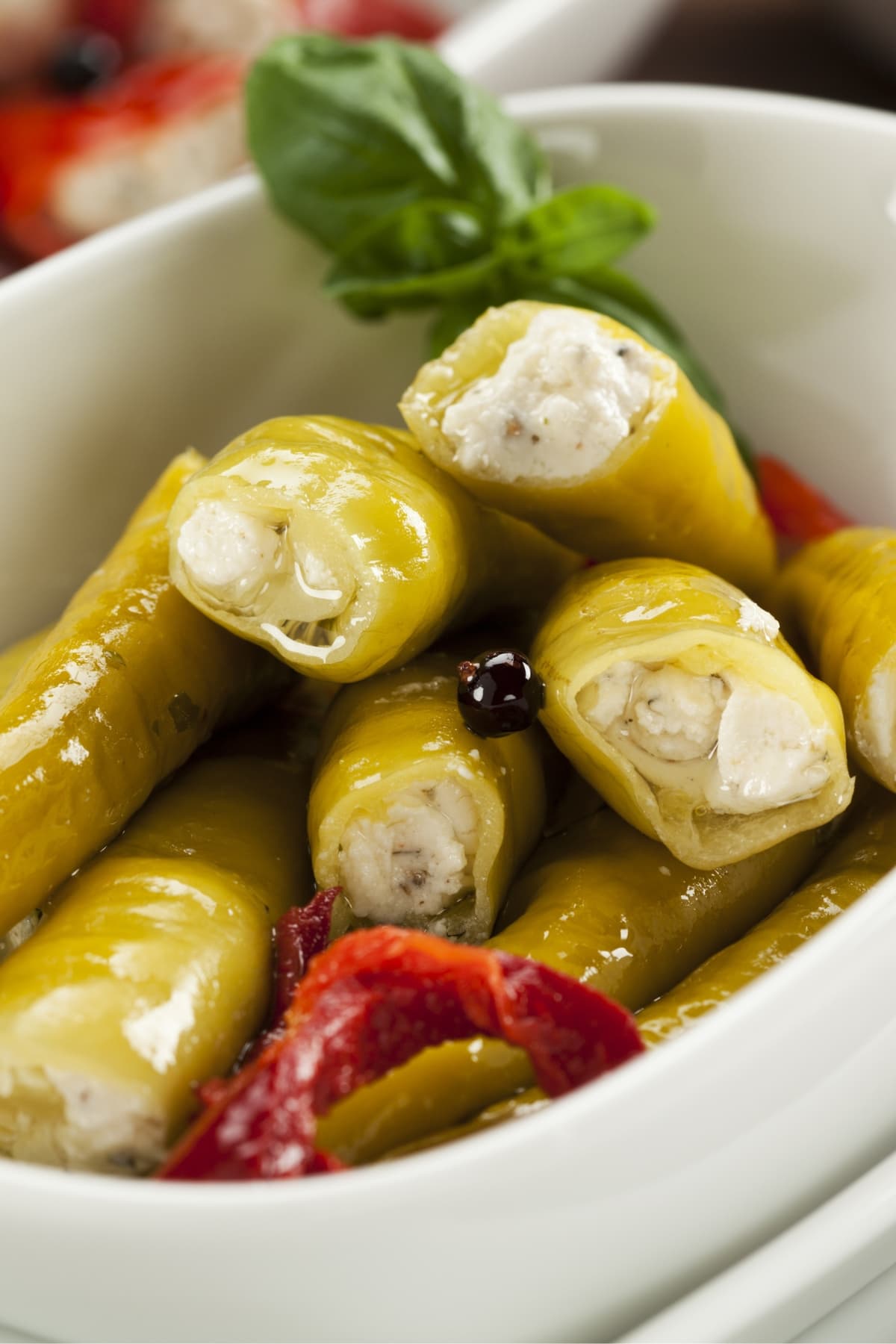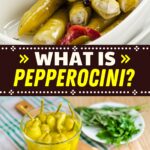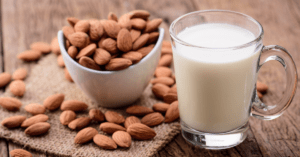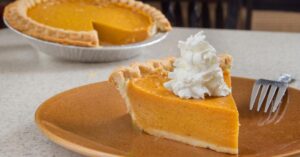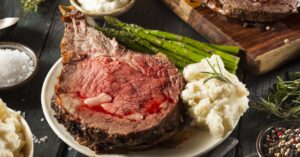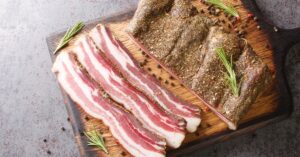In the world of spicy sensations, pepperoncini is a remarkable chili pepper. But what is pepperoncini, and what sets it apart from its fiery counterparts?
Often found adorning pizzas, salads, and Mediterranean dishes, pepperoncini is a versatile pepper.
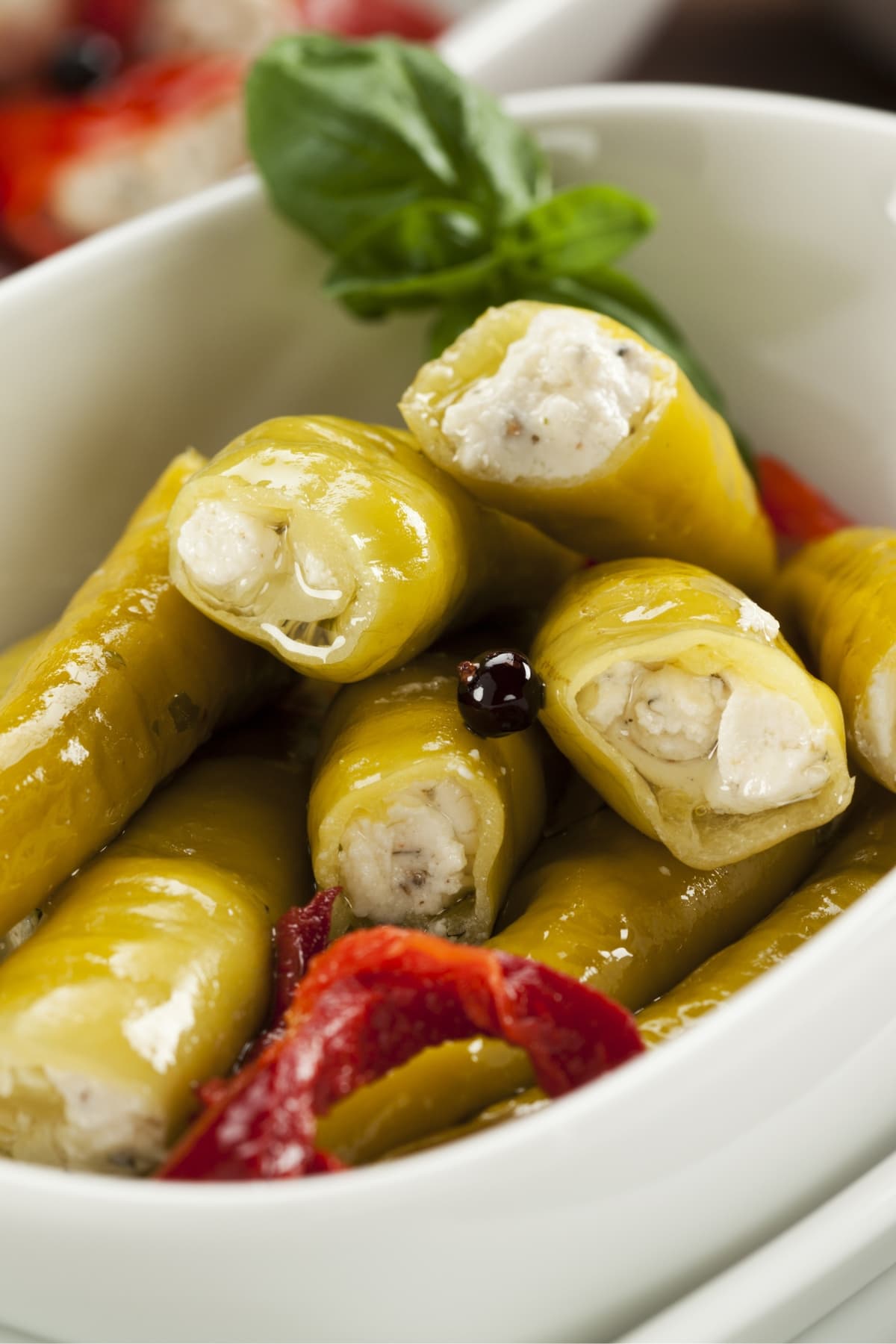
It boasts a distinctive flavor profile that includes mild heat and tangy notes.
So why don’t more people use it?
Typically, because they do not really know what it is. In this article, I answer the question, “What is pepperoncini?”
I will also cover how to use it, its taste, and how to pickle it. Plus, more!
Let’s get to it!
What Is Pepperoncini?
Pepperoncini is a yellow-green chili pepper with a mild flavor. Typically, it grows to be about 2 or 3 inches long.
Though you can eat them raw, most people encounter pepperoncini in pickled form.
You may also see them called Tuscan peppers or sweet Italian peppers.
Something important to know about pepperoncini. You are likely using the word wrong.
In fact, I will misuse it throughout this whole article. (Without a single autocorrect squiggly line!)
Like many Italian words, pepperoncini is actually the plural form of the word.
Its singular version is pepperoncino. (Fun Fact: The red squiggly line finally popped up under that word!)
But for simplicity’s sake, I’ll keep calling it pepperoncini for the singular.
Here’s another fun fact. The peppers we (in the US) call pepperoncini differ from Italian pepperoncini. Italian pepperoncini are hotter than ours.
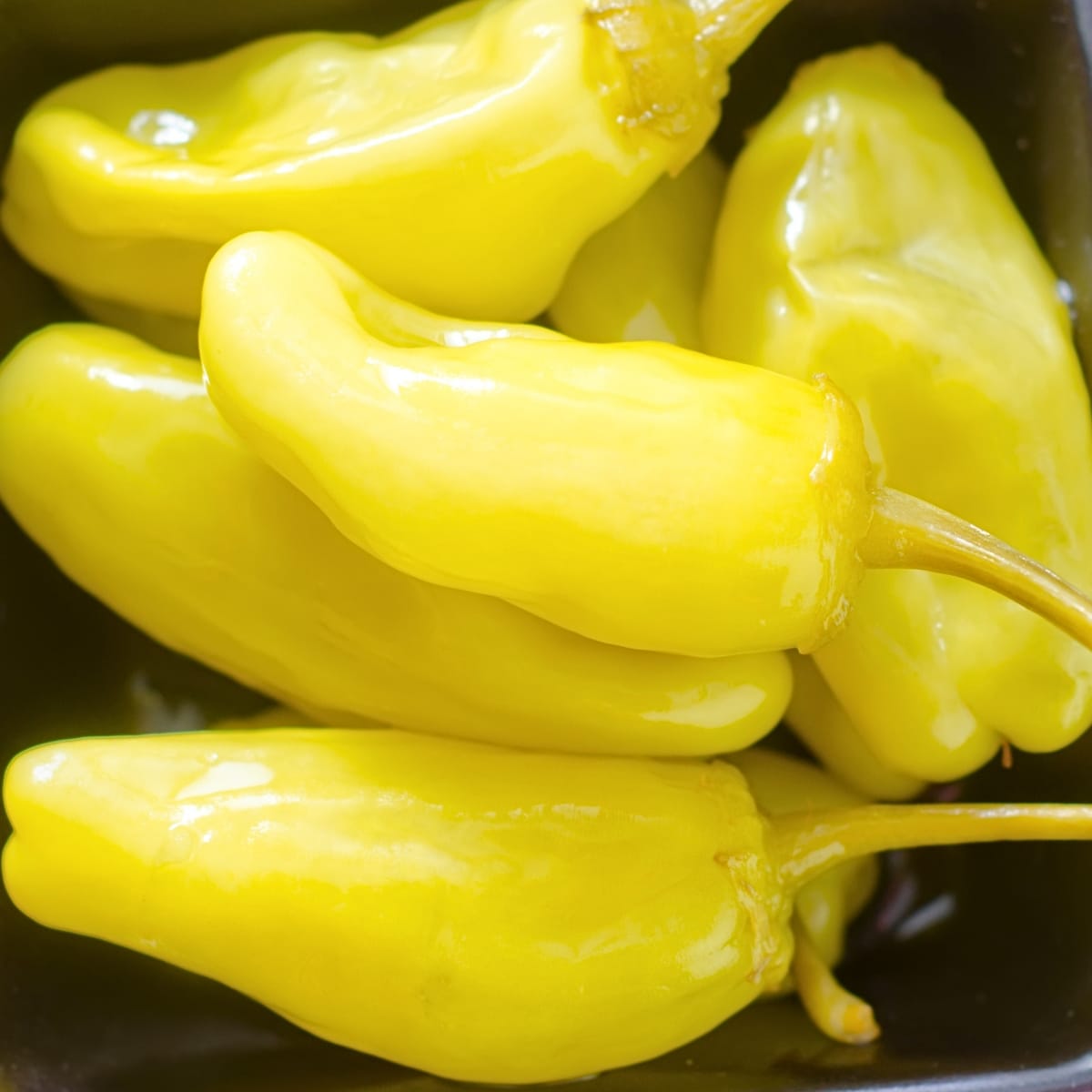
Where Do Pepperoncini Peppers Come From?
Originally, pepperoncini peppers came from South and Central America. You can still find them in various Latin American countries today.
However, they were not- and still are not- as well-loved in those areas.
Instead, most pepperoncini peppers today grow in Italy, Greece, and other Mediterranean areas.
I mentioned above that Italian pepperoncini are hotter than ours. This is because the peppers they call pepperoncini are pepperone peppers.
The ones we enjoy in the US are the milder friggitello peppers.
Interestingly, people did not eat pepperoncini for many years after discovering it.
Instead, they used it for decoration because they thought it was poisonous.
Are Pepperoncini Peppers Spicy?
Pepperoncini peppers are not spicy. They rank slightly higher on the Scoville Heat Unit (SHU) scale than bell peppers.
They are on par with banana peppers.
Bell peppers often have a SHU of 0; they are the mildest of the mild.
Pepperoncini SHU levels range from 100 (still mild) to 500 (not very hot). Banana peppers can range from 0 to 500.
Jalapeno peppers have a SHU of 2,500 to 8,000.
The most you’ll get from pepperoncini peppers is a slight tingle. They certainly will not set your mouth on fire.
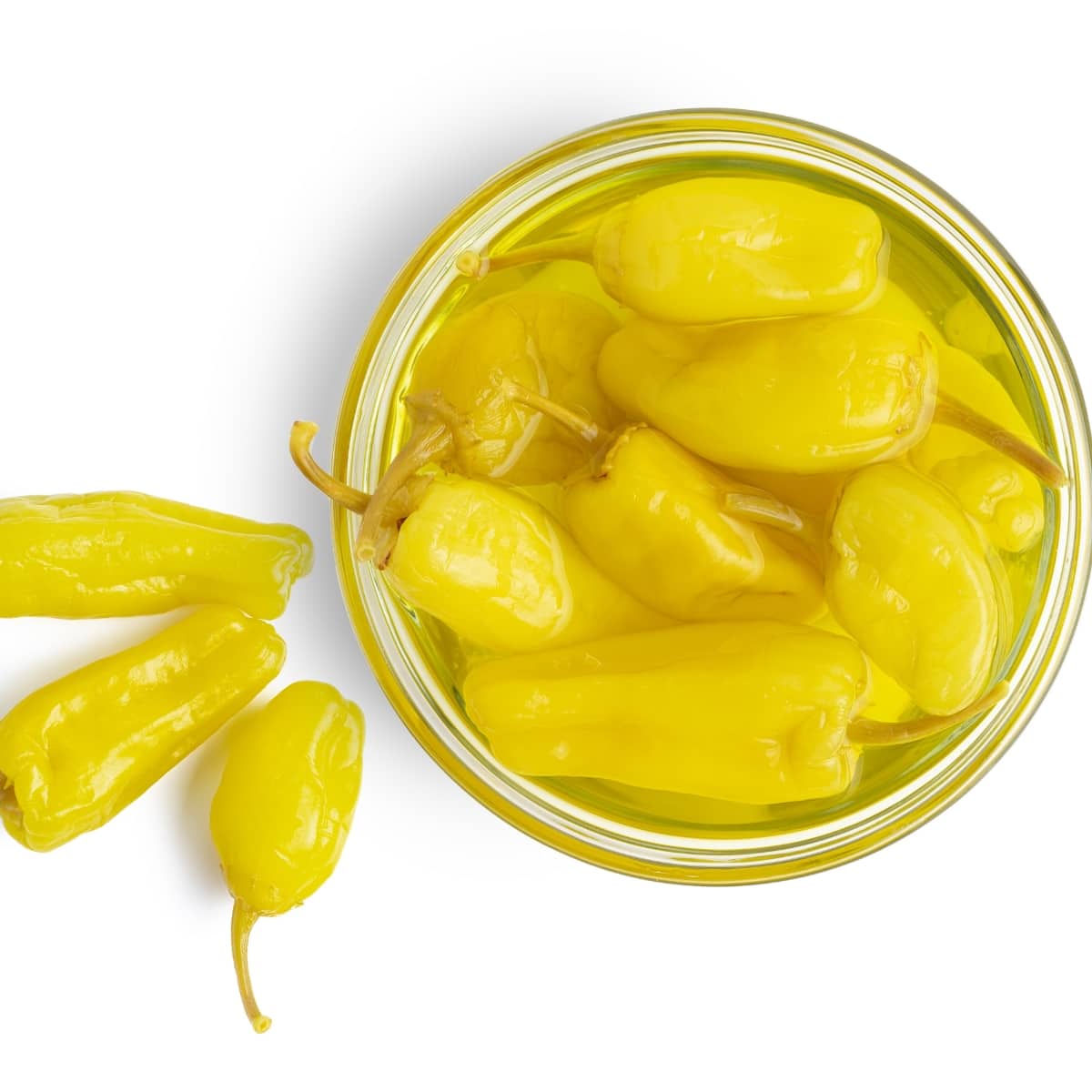
What Do Pepperoncini Peppers Taste Like?
Most people consume pepperoncini in their pickled form. Therefore, they have a tart and tangy, vinegar-heavy flavor.
Many people compare their taste to pickled banana peppers.
However, raw pepperoncini tastes like bell peppers – peppery and sweet.
Pepperoncini vs. Banana Peppers
I keep comparing pepperoncini to banana peppers, and not without reason. People often confuse the two.
They look alike and even have a similar taste when pickled. Although pepperoncini peppers are more wrinkly.
Pepperoncini, though, are hotter than banana peppers.
They aren’t much hotter, as pepperoncini peppers are not hot. However, they do have more heat than banana peppers.
Ways to Use Pepperoncini
Restaurants often serve pickled pepperoncini alongside pizza or in salads. (Papa John’s and Olive Garden are notable examples of places that do this.)
You can use them the same way.
However, there are other ways to enjoy pepperoncini peppers. Here are a few of my favorite ways:
- Slice them and put them on sandwiches or wraps.
- Use them as toppings for chili and other thick stews.
- Use them as toppings for hamburgers or hot dogs.
- Add them to taco salads or burrito bowls.
- Arrange them on charcuterie boards or antipasto platters.
- Cook them into omelets or other egg dishes.
- Prepare them with sausage for a sausage and peppers meal.
- Substitute them for bell peppers, banana peppers, or jalapenos in various recipes.
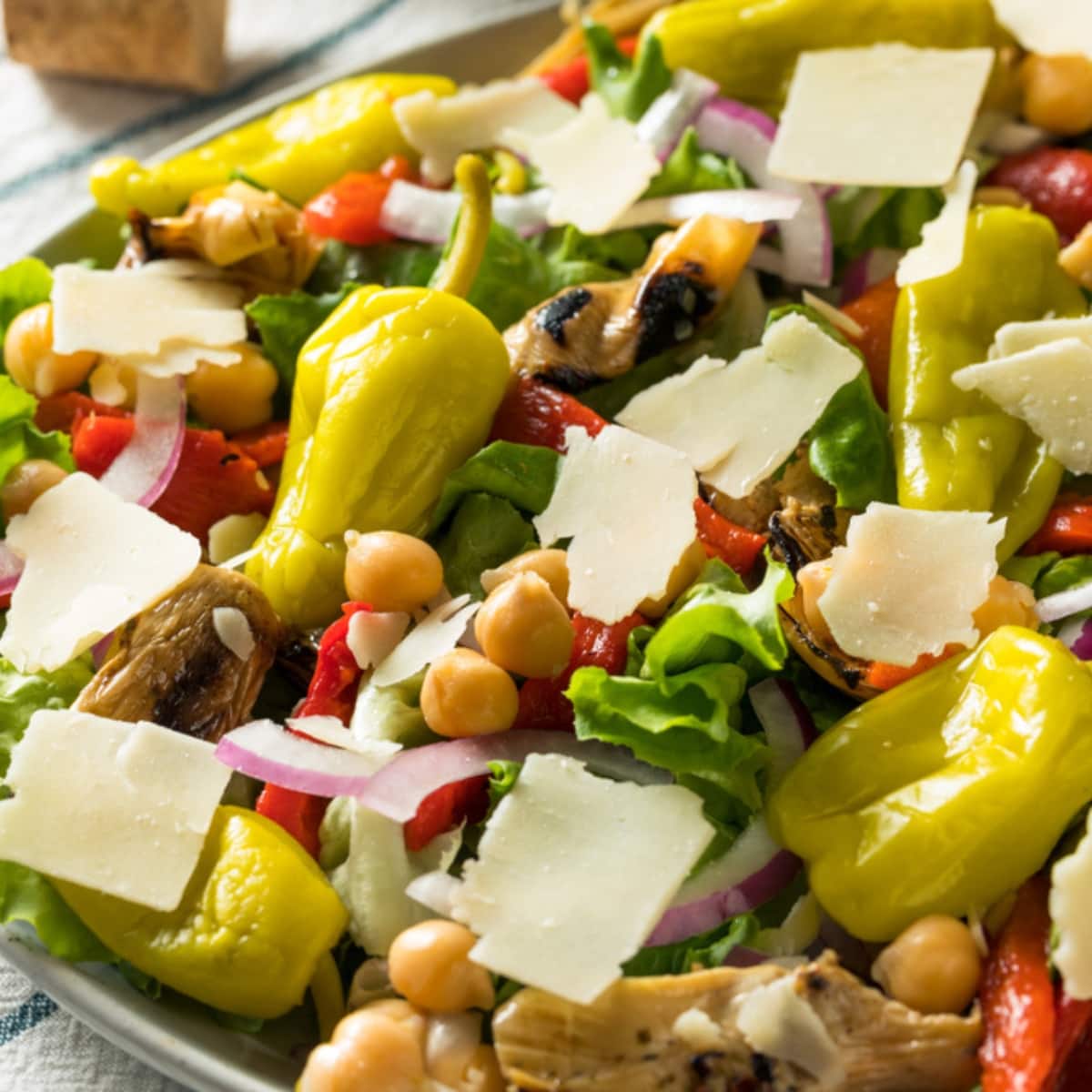
How to Pickle Pepperoncini At Home
Pickling fresh pepperoncini is easy!
Here is how to do it:
- Cut the pepperoncini lengthwise. Adding a single slit will open the peppers, allowing them to soak up the pickling juices.
- Put the pepperoncini in Mason jars. Add whatever seasonings you like best. Traditionally, the pickling recipe calls for peppercorns, bay leaves, and peeled garlic cloves.
- Make the pickling juice. Boil a mixture of water, apple cider vinegar, salt, and sugar. Let it simmer for 5-10 minutes.
- Add the liquid to the jars. Pour the vinegar mixture into the jars. Be sure to leave about an inch at the top.
- Let the jars rest. Place them somewhere cool and dark for about 2 weeks. You can also let them chill in the fridge for a quicker turnaround time.
Where to Buy
It’s easy to find pickled pepperoncini peppers. Most grocery stores and retail stores with grocery sections carry them.
You can find them in the same aisle as the pickles and other pickled products. You can also order them online from Amazon and other similar sites.
Finding fresh pepperoncini is much more challenging.
Unless you have a specialty Italian grocer, your best bet is to grow your own. Some farmers’ markets carry them, too.
Substitutes for Pepperoncini
Because the two are similar, banana peppers are the best substitute for pepperoncini.
They look and taste alike, and their SHU ranges aren’t significantly different. (Pepperoncini’s range is 100-500; banana peppers’ range is 0-500.)
Some people suggest using Hungarian wax peppers in place of pepperoncini. I do not recommend this.
While the two look and taste similar, Hungarian wax peppers are much hotter.
Their SHU is even higher than jalapenos, at 5,000 to 15,000 SHU.
Mistaking one for a pepperoncini will lead to a rather unhappy tongue.
